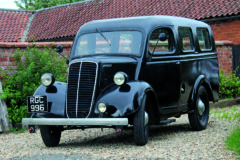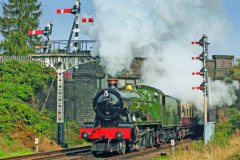World war-winning Fordson N
Posted by Chris Graham on 17th November 2020
If you want a tractor with personality, pedigree and a world war-winning reputation then, as Ben Phillips reports, you need look no further than the Fordson N.

World war-winning Fordson N: I would think this Fordson N is powered a Perkins engine. Conversions like this allow for the use of a labour-saving electric starter.
The Standard Fordson or Fordson N has surely gone down in history as a tractor for the people. I say ‘people’ and not farmers because, during the Second World War, you didn’t have to be a farmer to drive one. Indeed, with a shortage of male labour, women soon found that they’d be needed to drive these machines.
Known as the Woman’s Land Army, the nation’s mothers and daughters learnt all the work that a Standard Fordson could do, and did a fantastic job. Looking at these tractors today, it’s hard to believe just how much work they did; literally thousands and thousands of acres of pasture land were returned to food production thanks to the diminutive Fordson N.
Start swinging!
But if you’re reading this and already fancy one, there are a few things to consider first. To begin with, you can’t just get on one of these tractors, turn a key and have it start. You’ve got to get used to swinging a handle. What’s more, this isn’t like it’s often perceived in the old films, either, where the actor would turn the handle really fast, then jump on and drive off. Swinging a starting handle requires a certain amount of knowledge.
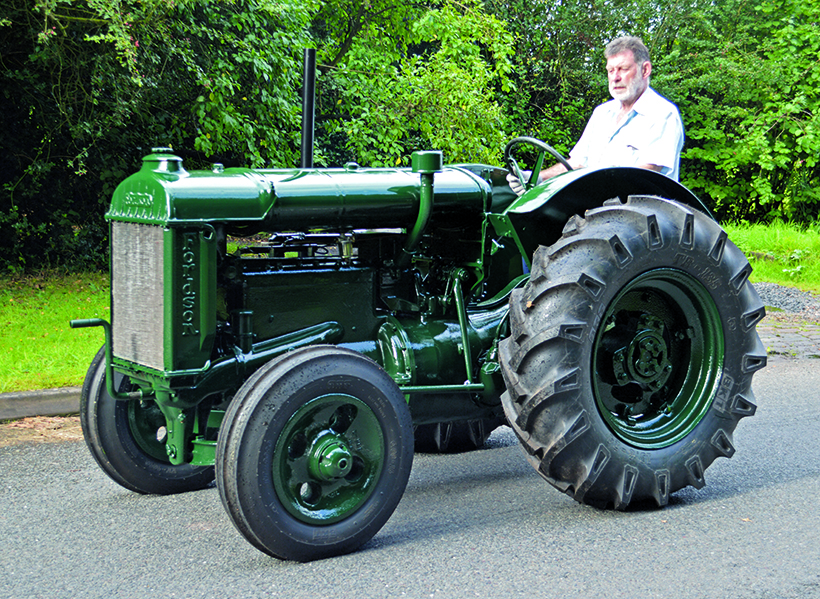
I restored this Fordson N a few years ago; it was a hop garden conversion, which meant it was lower and narrower than the normal type.
The first thing to learn is how to grip the handle. If you hold it like you would a bicycle handlebar, for instance, there’s a chance you’ll hurt your thumb or wrist, if the engine kicks back. Gripping it with the palm of your hand and thumb over your index finger, reduces the risk of injury.
Providing the carburettor is set-up correctly, you’ll also need to get the choke and accelerator into the right positions for the engine to start. Even then it might not start immediately, with further tweaking being required. When I had Timothy Lyons’ hop garden conversion Fordson N in for restoration, it hadn’t been running for many years, so I asked Pete – who does all my tractor transporting – to help.
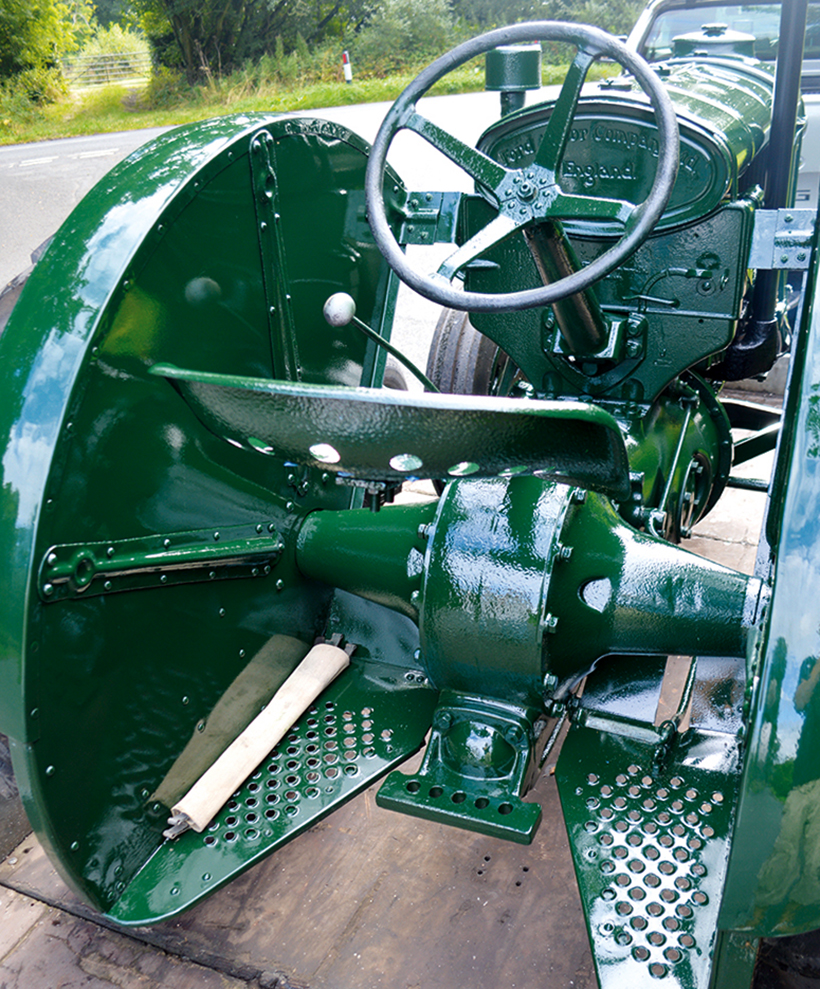
Simplicity was one of the keys to the Fordson N’s success. It was easy to get on and off, and had just a single pedal that operated both the clutch and the brake.
He’s owned Standard Fordson tractors for many decades, and knows their little ways and the dodges to get them running. He mentioned at the time that they all need something a little different. It shouldn’t be forgotten that some of these tractors are now 90 years old, and that most will have worked hard for a living during much of that time.
Simplicity itself
To me, one of the most alluring attributes of the Standard Fordson is its simplicity. It has to be the easiest tractor I know to get on and off the driver’s seat. This simple manoeuvre, from the rear of the tractor, just involves a step up – with plenty of room for even the biggest boots – and then, quite naturally, your bum finds the pan seat. Even though it’s just a hard pan seat, the long spring it’s bolted to gives a great bounce, and makes the ride surprisingly comfortable.
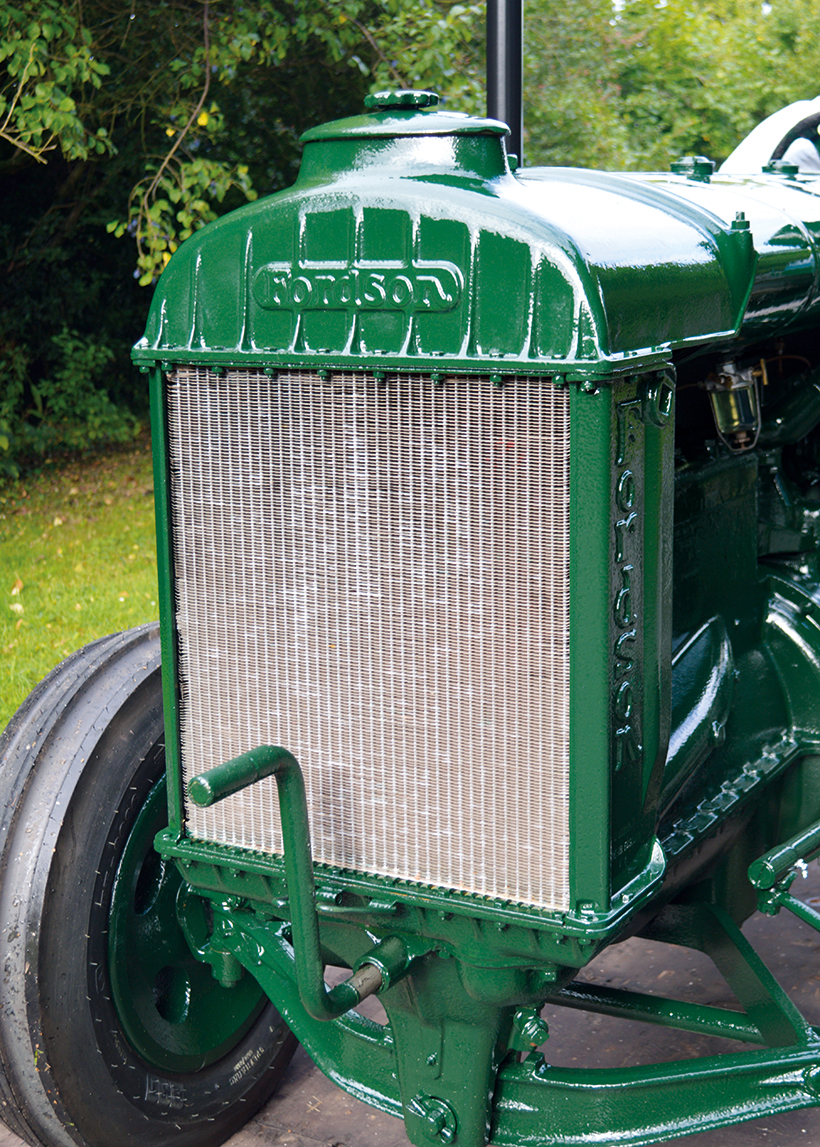
With no tinwork for protection, the soft radiator fins are vulnerable to damage and can look unsightly.
Below the seat and above the footboard, there’s one pedal which is a combined clutch and brake. So even more simple. The seating position, being so far back, means that the driver can see the full length of the Fordson, and there’s no fancy tinwork to obstruct the view. Instead, the oval-shaped fuel tank runs along the top of the engine, and there’s the word ‘Fordson’ embossed on the end facing you. There’s no dashboard, so no gauges. If you’re lucky, there will be a temperature gauge towards the front of the tractor, on top of the large radiator casting.
With no tinwork to hide or protect the radiator core, its soft fins can get damaged more easily. However, replacing the radiator isn’t as hard as you might think. The tractor I restored for Timothy needed a new core, so I bought one from Cotswold Vintage Tractors. Unlike more modern radiators, you don’t have to be a dab hand at soldering; it’s just a case of undoing or cutting off quite a few nuts and bolts, then fitting new ones together with fresh gaskets.
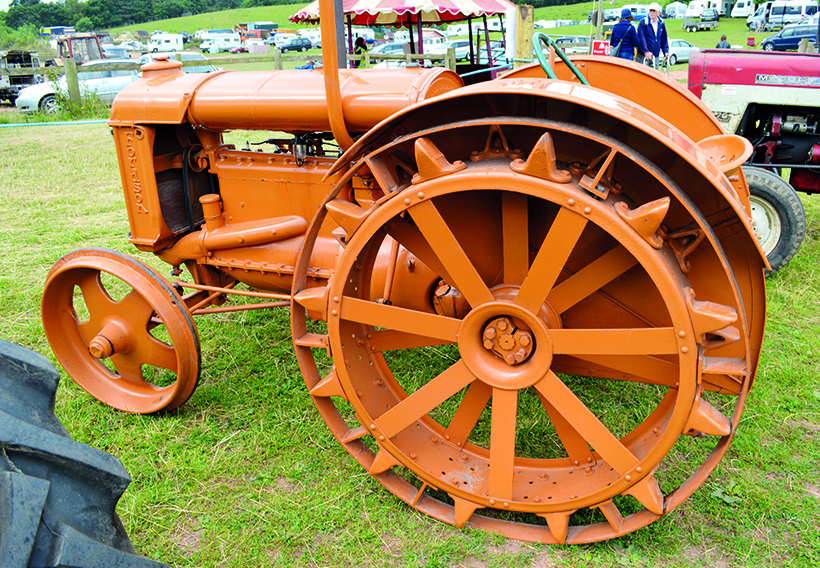
You could choose a variety of colours, including bright orange. This example is fitted with metal wheels, and the rears have road bands added.
Colour choices
You have a choice of paint colours when buying a Fordson N, which is quite unusual in the old tractor world. The paint used was changed a number of times during production, but started with blue body/orange wheels combination. This then changed to the whole tractor being finished in orange but, once the war started, this was throught to present too tempting a target for the Luftwaffer. So the switch was made to dark green and then, at the end of the war, the finish returned to the blue/orange combination again.
Many examples nowadays are still in their ‘working clothes’, with most of the original, factory-applied paint finish having long gone. However, there are still a few about with a nice covering of original colour. Finding a good, original Fordson N isn’t hard and, because of how old these tractors are, I think that unrestored examples actually look nicer. A wipe over with an oily rag looks much more authentic to my eyes, than a freshly-painted finish.
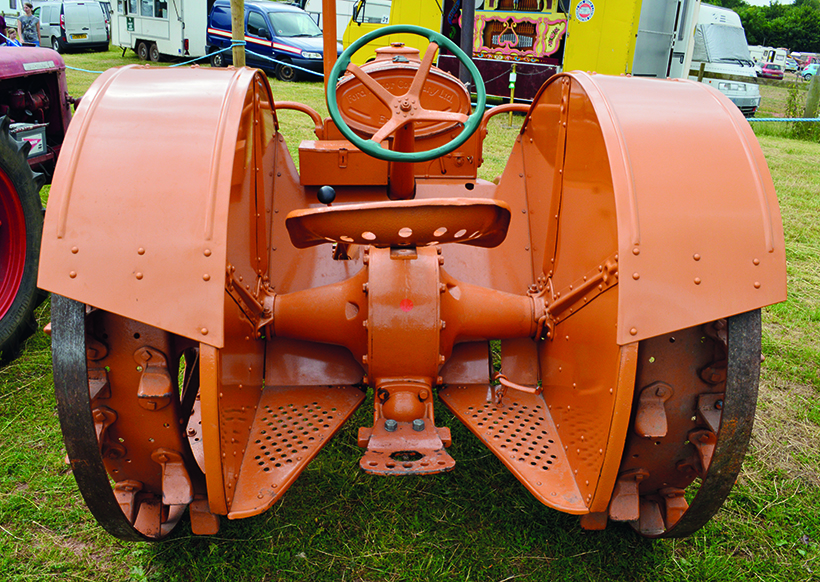
Wide wings give full protection over the rear wheels; note how simple it is, looking forward from the driver’s seat.
I found, while restoring Timothy Lyons’ tractor, that I had to do things differently compared to what I do to all other tractors. I had it sandblasted, primed and undercoated, as per normal but, when it came to the final coats of paint, I sprayed it as a complete tractor. The tractor was so complete it even had the wings and wheels fitted, as fitting these items after spraying would have damaged the paintwork.
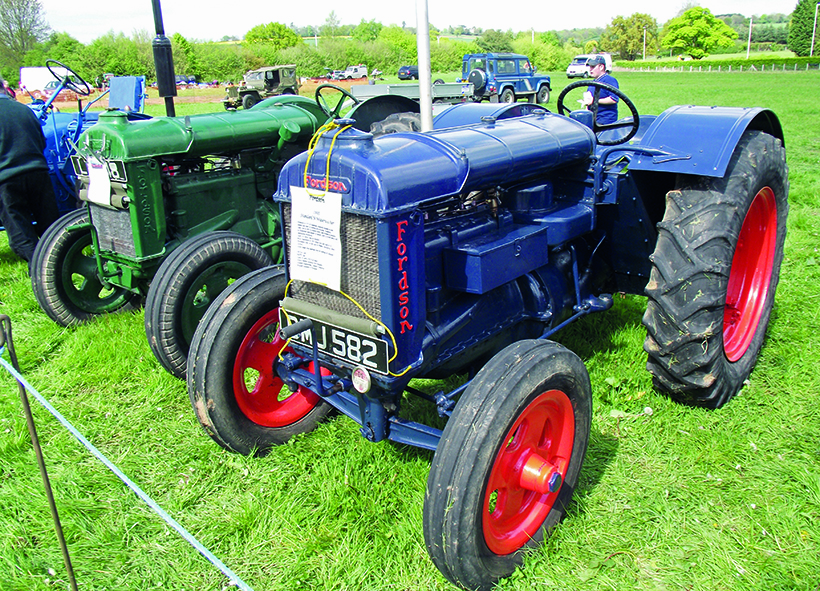
A familiar Fordson colour scheme was blue and orange. Various shades went on to colour Fordsons for a few decades.
There was a lot of masking-up needed, of course, but it was worth it. The job was made easier because the tractor was all one colour; if it had been a two-colour model, my approach wouldn’t have been so straightforward. I also resisted the temptation to paint the embossed ‘Fordson’ letters on the front in a different colour. I always think that it looks better if these are kept the same colour as the rest of the tractor.
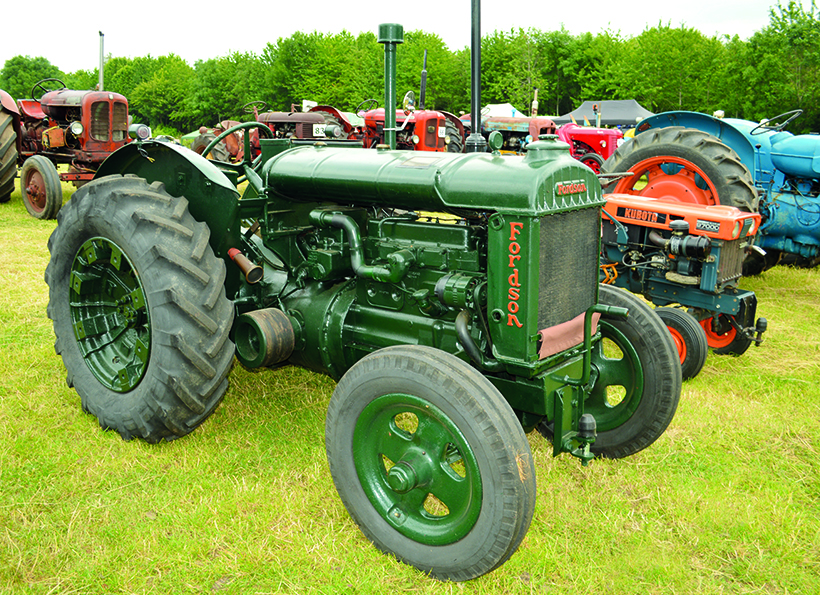
Green Fordson Ns are also available. They were painted this colour to help camouflage them in the fields during the war.

You can see why it was decided to switch away from this bright orange during the war.
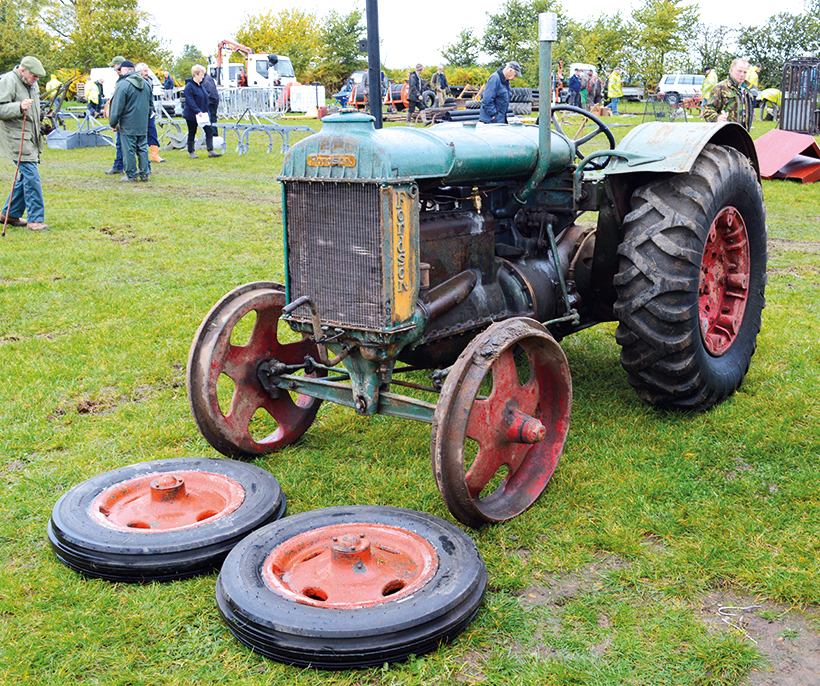
This example, seen at a farm sale, has obviously been orange before it was green – perhaps it was repainted during the war.
Parts availability
If you want your Fordson looking good and restoration is needed, don’t be deterred by thinking that parts aren’t available, because they are. Cotswold Vintage Tractors specialises in a lot of parts for these tractors, as does The Old 20 Parts Company. There are also a few metal-working specialists that fabricate reproduction wings for narrow- and wide-winged models. If you prefer originality, there are always a few tractors being broken for spares. Ross Bartlett, at Bartlett’s of Winchester, is one such source of good, original parts. He can also find suitable, complete tractors, for that matter!
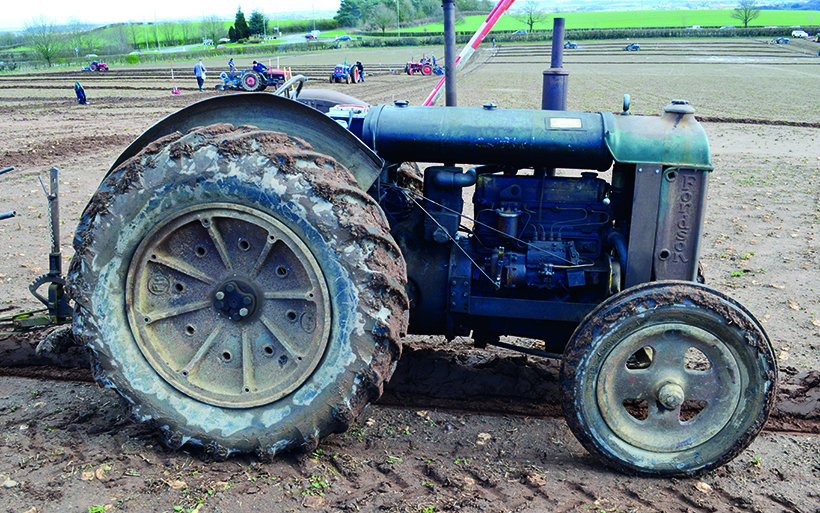
This tractor has, at some point in the past, been fitted with a Fordson Major engine. It looks like a neat conversion, and sounded great!
A Standard Fordson doesn’t have to be ‘standard’ either, as there are many variations on the theme. If the starting procedure of swinging a starting handle is putting you off, then you could get lucky and find one with a more user-friendly engine. As with most tractors, people have squeezed many different motors into the N over the years. For example, I saw one fitted with a Fordson E1a Major engine, which looked extremely neat and sounded great. This is just one of many conversions that you might vcome across.
More variations
It’s not only different engines that can found, but also different liveries, because these tractors had a variety of uses – not just to do with farming. Standard Fordsons painted in RAF colours (not only blue, but also green) can be found, which are different from the normal shades found on the agricultural models. Finding such machines is a little more special than coming across the ‘normal’, agricultural versions, as these versions probably worked at an airfield, maybe helping to load Spitfires, Hurricanes or Lancaster bombers. No other tractor could have such a connection away from agriculture, which surely makes this tractor worthy of a purchase.
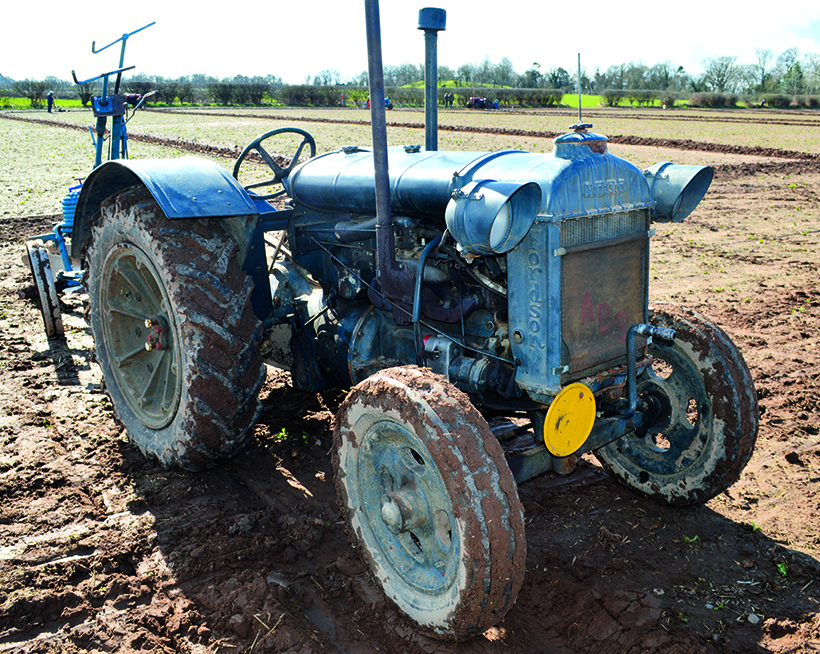
This RAF version was a nice find for its owner. Still in RAF blue, the paintwork is in great condition. Note the big headlights with shrouds to cut down on the glare.
Earlier I mentioned Timothy Lyons’ Fordson that I restored, and that it was an orchard conversion. This had a few differences to the normal version, most notably, smaller wheels – 16 instead of 19in at the front (of a different design) 24 rather than 28in at the back. Also, with the front and rear axles being shorter, this resulted in a narrow and low tractor that was best suited to its intended working environment.
Industrial option
Other variations of the Fordson N to be found include the ‘industrial’ version, which has smaller, solid-rubber wheels, making the tractor sit lower. These models generally don’t have wings fitted, which makes them look quite different. Also, they’re typically fitted with a downswept exhaust, insteasd of the more usual, vertical type.
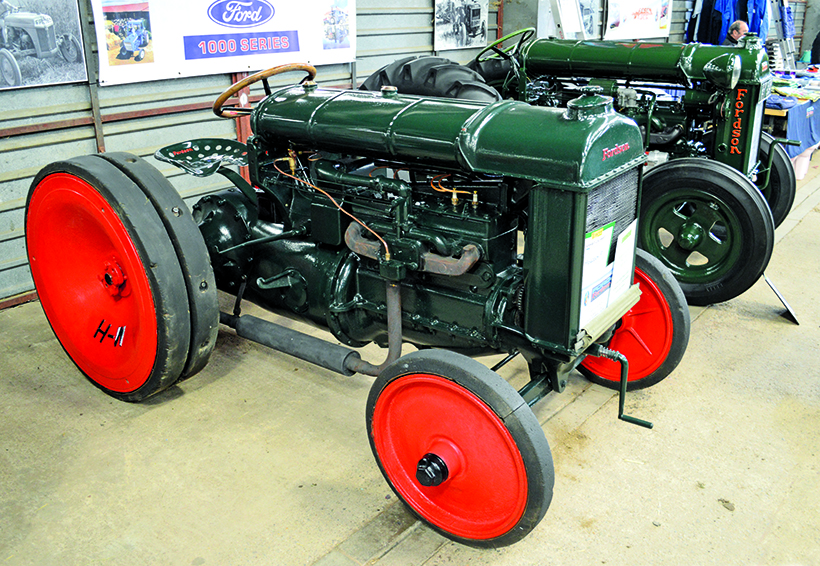
This ‘industrail’ is another nice version, with solid-rubber wheels that are smaller than the standard, agricultural type fitted to the machine next to it.
If you fancy something different – but of the same shape – you may find a Roadless version of the Fordson N which, instead of wheels, ran on tracks. Whichever Fordson N you decide you fancy, don’t forget that probably never before has a vehicle done so much for a nation in its hour of need.
Finally, which would I choose? Well, I quite like that hop garden conversion I restored so, if I could find one, that would do for me. Failing that, I would probably like an industrial version…
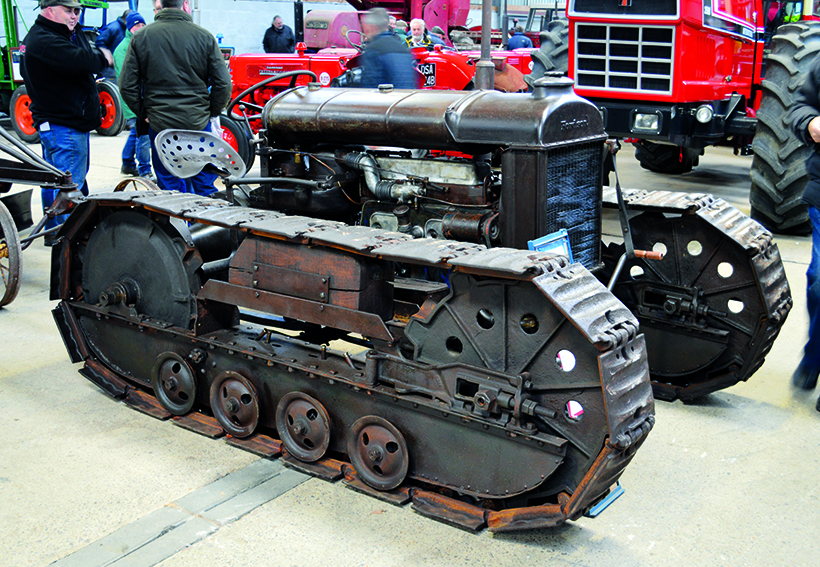
If you like tracked vehicles, and like the shape of the Standard Fordson, maybe this would suit you.
For a money-saving subscription to Tractor & Farming Heritage magazine, simply click here

This is what the Standard Fordson N is famous for; working the land with a trailed plough.



